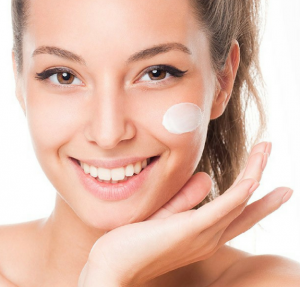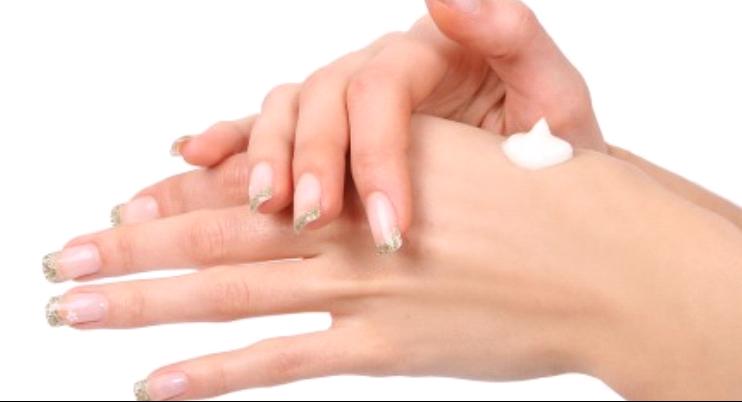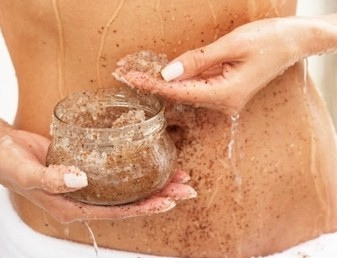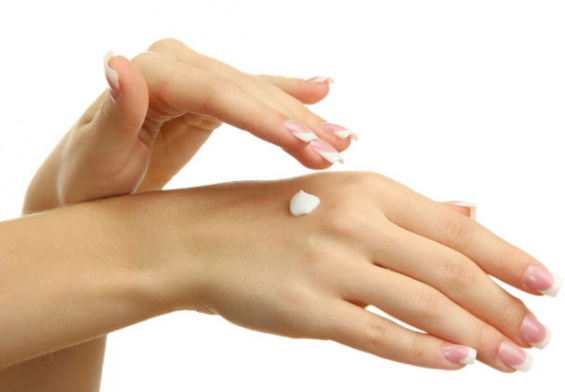As people age, the body goes through a number of changes. For example, cells turnover at a diminished rate, as we grow older. Every 28 days, the skin naturally sheds dead cells and replaces them with younger cells. But as the body matures, this renewal process slows down, and new cells begin to regenerate less often. These circumstances allow old, dead skin to remain on the skin for a longer period of time. Once individuals reach the age of 40, the body’s collagen production begins to dwindle, which engenders lines, dullness, and wrinkles. Moreover, decades of exposure to taxing environmental factors like pollution, harsh weather conditions, and prolonged sun exposure is detrimental to one’s skin. While delaying the aging process is an impossible feat, small lifestyle adjustments can make a big difference when it comes to preserving and improving the look and feel of skin. Dermatologists provide 10 easy ways to erase signs of aging and help forge radiant, healthy, youthful skin.
1. The Benefits Of A Healthier Diet
Eliminating unhealthy foods in one’s diet can greatly enhance skin tone and complexion. Eating an excess of sugar can cause wrinkles, this occurs during the process when sugar attaches itself to collagen forming advanced glycation. Refined carbohydrates have the same negative effect, triggering a spike in hormones, thereby leading to acne breakouts. Meanwhile, greasy and fried foods can clog pores, which can also provoke breakouts. Furthermore, diets that contain high levels of sodium cause the body to retain water, resulting in a puffy face and under-eye bags.
But certain foods contain essential nutrients for healthy skin, and eating these power foods will grant the skin invaluable benefits. For example, olive oil awards strong anti-inflammatory effects on the skin to help reinforce elasticity and firmness. Foods containing rich antioxidants defend the skin against unstable skin molecules that cause skin damage. Eating foods such as Green tea, yogurt, fruits, and vegetables provide abundant antioxidants and are easy additions to any diet. Furthermore, increased consumption of omega-3 rich foods like salmon, flax seeds, and walnuts can keep the skin looking supple. Incorporating vitamins into a diet can also benefit one’s skin health. More specifically, Vitamin C produces collagen, Vitamin D improves skin tone, Vitamin E protects from sun damage, and Vitamin K keeps skin looking and feeling smooth.
2. Keep Skin Safe By Weather Proofing
It’s no secret that the sun is the number one culprit of skin damage; so it is critical to defend skin against the sun’s intense UV rays. The sun’s ultraviolet light damages skin’s elastin and fibers by breaking them down. When these fibers become damaged, the skin begins to sag and stretch, leading to premature aging. These rays are also the leading cause of skin cancers. Therefore, wearing sunscreen is imperative to skin health.
Not only do experts recommend wearing and reapplying sunscreen to protect the skin from harmful UV exposure during the summer months, but during the winter months as well. Do not let the colder temperature distract from the fact that skin is safe from the sun’s UV rays during winter; UV rays remain harmful year round. Dermatologists recommend applying a small amount of sunscreen to any skin exposed in the winter to ensure ample protection.
Individuals can also be proactive with protecting their skin from the natural elements by wearing protective clothing; hats can provide shade, sunglasses can prevent damage, and carrying an umbrella can protect the entire body from the sun’s UV rays. Appropriate attire can also protect the skin from drying out during winter, so individuals should add scarves, hats, and gloves their wardrobe. Furthermore, administering ChapStick can be vital to shielding skin from the harmful outdoor elements.
3. Exfoliate Often To Brighten Dull Skin
Dead skin cells continuously formed on the surface of the skin can cause dryness, dullness, and flaking. To encourage the growth of new, healthy, younger skin cells, one must remove the old cells by incorporating exfoliation into their skin care regimen. A popular and pragmatic method to expel dead skin cells involves utilizing exfoliating scrubs. These products contain chemicals that remove dead skin and come in varying levels of abrasiveness.
Using a soft, natural-bristle brush can best remove dead cells. Alternatively, one can opt for electronic devices with rotating brush heads that can dislodge dirt and sweep away dead skin.
For combination skin, today’s dermatologists recommend exfoliating once per day. However, sensitive skin can become easily irritated and inflamed. In this case, be sure to use the product less frequency and according to skin type. After exfoliating, be sure to apply a skin moisturizer to help keep the skin’s surface smooth and lock in hydration.

4. Use Skin Care Products Regularly
A variety of products on the market claim to be the end-all solution to aging skin. While some skincare products provide valuable benefits to skin health, others may actually exacerbate skin irritations. For example, petroleum-based products, or products with mineral oil, have a strong correlation with wrinkles, so approach them with caution. Ethanol, methanol, benzyl alcohol, and other alcohols found in skin care products can dry out skin and cause premature aging. Thus, one must be knowledgeable about the product they place on their skin.
Alternatively, dermatological statistics show that skincare products containing AHA or BHA can effectively smooth skin. Likewise, products containing Vitamin C, E, or K will also aid in reducing signs of aging. In addition, ceramides act as an adhesive to skin cells, therefore frequent use can maintain skin appearance and fight creases and wrinkles. Copper has proven effects of youthfully plumping complexion since it attaches to collagen.
Furthermore, many prescription products offer numerous benefits in slowing signs of aging and revitalize damaged skin. Retinoid creams, for instance, benefit by weakening substances embedded in the skin which break down collagen after sun exposure, all while increasing and facilitating collagen production.
5. Exercise Regularly
A great deal of research suggests that exercise can assist in slowing down the body’s aging process. Regular exercise increases blood flow; when blood carries more oxygen and nutrients to functioning cells throughout the body, the skin achieves a healthier appearance. Blood flow also expels toxins and waste from the skin, thereby cleansing it from the inside out. Routinely exercising also helps stimulate the amount of human growth hormone the body produces, which can lead to thicker, stronger skin. Regular exercise also boosts collagen production and enhances skin elasticity. In addition, breaking a sweat at the gym opens pores, allowing skin to breathe.
However, one must remain cautious when exercising. After excessive sweating, be sure to shower immediately to avoid irritation or breakouts. Individuals must also keep their skin hydrated during and after their workout routine.
6. Avoid Skin Destroying Habits
There are numerous habits that can actually lead to the destruction of skin cells and prevent skin from looking young. By being mindful of these harmful habits and proactively avoiding them, skin’s condition will drastically improve. One negative lifestyle habit is smoking. Smoking is one of the leading causes of premature aging and depletes the body of vital nutrients like Vitamin C. Secondhand smoke can also affect the skin because the carbon monoxide found in cigarette smoke displaces the skin’s oxygen and reduces blood flow, leaving the skin looking dry and discolored. The subsequent decrease in blood flow will also cause wrinkles and bags to appear.
Tanning booths and indoor tanning are another major cause of unhealthy skin. According to The Melanoma Research Foundation, the aging process accelerates each time skin becomes exposed to UV light. Prolonged exposure leads to leathery, dry, shriveled skin. Also, while inside a tanning booth, the skin burns and the ability to repair cells diminishes.
Wearing excessive makeup will also lead to unhealthy skin. Applying too much makeup creates a barrier that clogs pores and prevents skin from breathing. But reducing the amount of makeup can improve the condition of the skin. In addition, switching to natural or mineral-based products can greatly help diminish the side effects of makeup use. Dermatologists advise using products without fragrances or added preservatives. Finally, be sure to remove all makeup before bed. Failing to do so obstructs the natural skin repair process that occurs overnight.
7. Keep Skin Hydrated
Drinking water is essential for skin health, as the recommended 64 oz. per day can effectively keep the skin hydrated from the inside out. In addition to drinking water, there are many other ways to hydrate skin. Using a humidifier helps to restore moisture back into the dry air, which, in turn, keeps the skin hydrated. Moisturizing creams also greatly help lock in the skin’s water, maintaining an appropriate level of hydration.
Dermatologists recommend applying spritzing rose, sandalwood or bergamot essential oils on the skin when an individual feels their skin requires an extra boost. These oils help repel pollutants and lock in the skin’s natural lubricants. When the skin remains constantly hydrated, individuals will have an easier time achieving a more youthful glow.
8. Effectively Managing Stress
The body’s natural response to combat stress involves producing a surge of hormones specifically Cortisol. Cortisol is a steroid that yields many positive effects when produced in moderation. But when stressed, the body can potentially release too much of the hormone, which then triggers inflammation that can break down collagen. As a result, maintaining stress is an essential component of skin health and maintaining a youthful appearance. Meditation and yoga are both proven stress release methods that can lead to healthier skin. In addition, essential oils can help put the body and mind at ease. Many people also find success in leisure pastimes like hiking, painting, or exercising. Finding an effective and positive outlet to de-stress will ultimately lead to younger, healthier looking skin.
9. Get Enough Rest
It is important to make sleep a priority. A good night’s sleep leaves the skin feeling replenished, rejuvenated, and fresh. Meanwhile, lack of sleep accelerates aging and weakens the skin’s ability to repair itself. Moreover, sleep deprivation leads to dehydration of skin, wrinkles, and irritation after merely one restless night. To improve sleeping habits, curl into bed and wake up at the same time each day and the body will adapt accordingly. It is also best to avoid technology around bedtime so your body can rest without the distraction of light.
Also, it is of the utmost importance to change bed sheets and pillowcases regularly to avoid any skin irritants while sleeping. Bed sheet and pillowcase material also play an important part in skin health. For instance, cotton sheets will rub uncomfortably against the skin and cause overnight irritation. Thus, splurging for higher thread count or quality material like silk can make a huge difference when attempting to improve one’s skin health.
10. Professional and Cosmic Dermatological Treatment Options
 Dermatologists offer a variety of advanced skin treatment options that can help slow down the aging process. Fro instance, laser treatments use concentrated beams of light to resurface the skin and improve appearance, minimizing fine lines and wrinkles, treating redness and spots, boosting collagan and tightening skin. Alternatively, chemical peels effectively shed outer layers of skin allowing for the production of younger skin cells. Both these treatments can lead to a smoother complexion and youthful appearance. The recovery time tends to last approximately 1-2 weeks, but time may vary depending on desired results and skin type.
Dermatologists offer a variety of advanced skin treatment options that can help slow down the aging process. Fro instance, laser treatments use concentrated beams of light to resurface the skin and improve appearance, minimizing fine lines and wrinkles, treating redness and spots, boosting collagan and tightening skin. Alternatively, chemical peels effectively shed outer layers of skin allowing for the production of younger skin cells. Both these treatments can lead to a smoother complexion and youthful appearance. The recovery time tends to last approximately 1-2 weeks, but time may vary depending on desired results and skin type.
Intense pulsed light, also known as IPL, is another method of skin resurfacing that can lead to a younger appearance. IPL grants the skin both strength and elasticity by delivering light in short increments. This method is non-ablative, meaning it will not remove skin; more importantly, this process requires little to no downtime or recovery periods.
Microdermabrasion involves a high grade exfoliant. Using a fine tipped instrument to produce a mist containing fine, abrasive particles, individuals can achieve younger looking skin with little healing time and fewer side effects. Individuals can usually schedule microdermabrasion appointments in 2-month increments.
Finally, Botox is another commonly used age-reduction method. Botox is an injectable purified protein, derived from botulinum toxin. When injected into an individual’s facial muscles, movement temporarily diminishes around the area until facial lines begin to fade. While individual results will vary, patients will need to repeat Botox treatments every 3-6 months for maximum effectiveness.
Achieving Healthier Younger Skin
From implementing changes into one’s diet to getting a good night’s rest, simple lifestyle adjustments can lead to healthier and youthful looking skin. For the best results in younger skin, be sure to consult with a dermatologist near you. These trained medical professionals can best assess each patient’s skin type and offer professional advice to determine the best treatment options to derive the best results.




